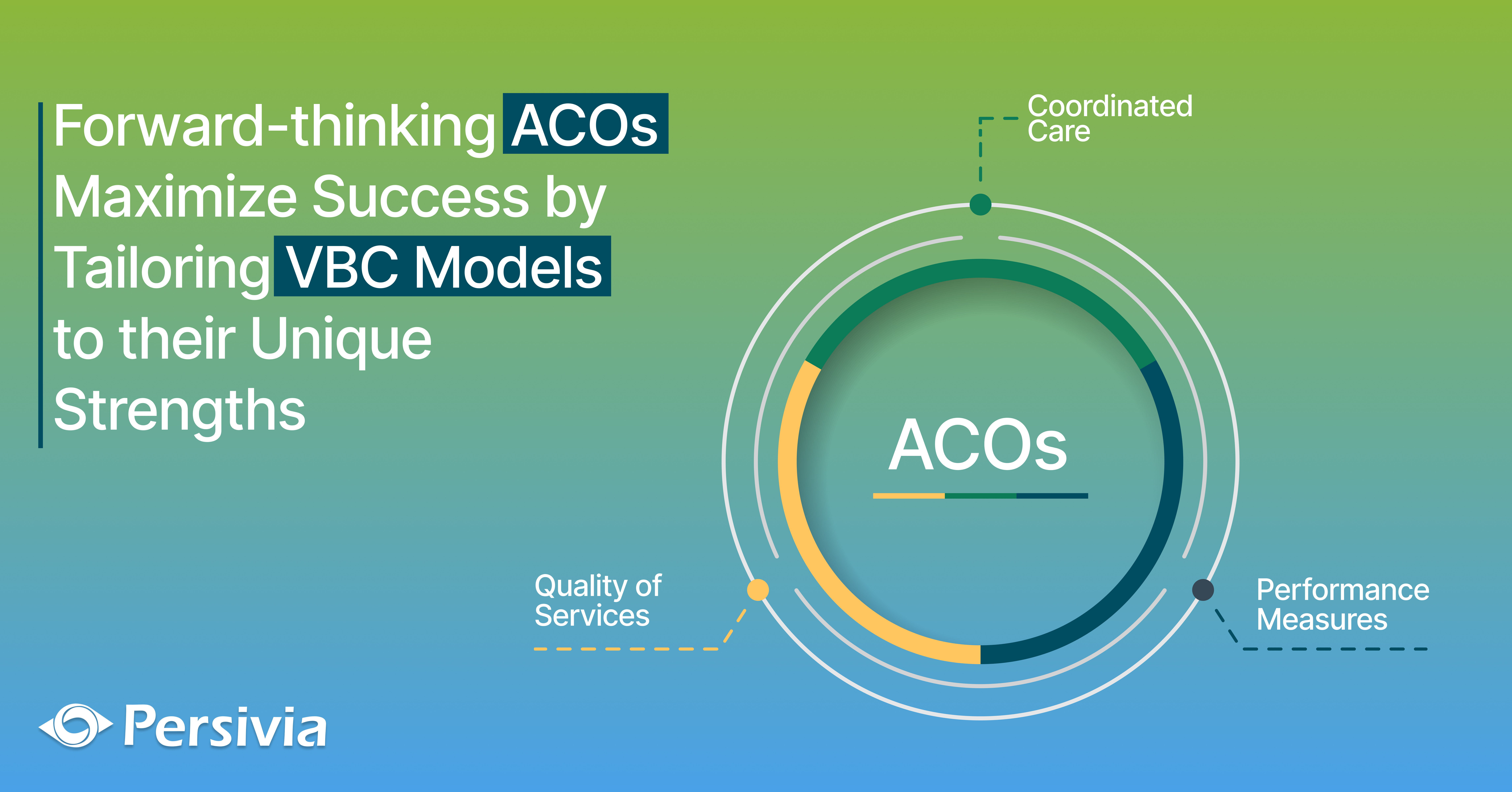ACOs operate in an environment where CMS and commercial payers have accelerated the transition to more sophisticated value-based care models, making thoughtful optimization not just beneficial but essential. The training wheels are off, and organizations that continue to apply generic approaches find themselves falling behind their strategic counterparts.
What truly differentiates thriving ACOs isn’t merely their size or resources. It’s their ability to make the rights choices aligned with their distinctive strengths—whether that’s specialized clinical expertise, demographic insights, or operational efficiencies. The most forward-thinking organizations have moved beyond asking “Should we participate?” to the more sophisticated question: “How do we excel in these models by leveraging what makes us unique?”
The most forward-thinking ACOs recognize that success in this landscape demands more than generic best practices. It requires a tailored approach that transforms organizational characteristics—from provider composition to patient demographics—into strategic advantages in value-based contracts.
ACOs in Advanced Value-Based Models
The Centers for Medicare & Medicaid Services (CMS) has steadily pushed ACOs toward more advanced value-based arrangements. With recent program redesigns like ACO REACH and enhanced MSSP tracks, the message is clear: the future belongs to organizations that can effectively balance financial accountability with high-quality care delivery.
This evolution demands that ACOs develop capabilities traditionally associated with health insurance companies—population analytics, patient stratification, and strategic resource allocation. However, unlike traditional insurers, ACOs maintain their clinical focus and direct patient care relationships, creating a unique hybrid model that requires specialized approaches.
Knowing Your Organization’s Risk Profile
Before implementing any risk strategy, forward-thinking ACOs must conduct an honest assessment of their organizational strengths and limitations. This is particularly important given the diversity of ACO structures – some are hospital-affiliated while others operate independently as physician-led organizations. Each model comes with distinct advantages and challenges when managing risk.
Focusing on Your Strengths
The most sophisticated ACOs don’t take a one-size-fits-all approach—they strategically allocate resources based on organizational strengths. This approach involves:
1. Identifying Core Competency Areas
Every ACO has natural strengths based on its provider composition, historical focus, and infrastructure investments. These areas represent opportunities for risk acceptance:
· A cardiology-focused ACO might embrace full risk for cardiac care, knowing their specialized protocols and pathways deliver superior outcomes at lower costs.
· An ACO with exceptional primary care and strong chronic disease management programs might excel with complex, multi-morbidity patients that other organizations struggle to manage efficiently.
2. Developing Targeted Risk Mitigation Strategies
For areas outside core competencies, forward-thinking ACOs employ various risk mitigation techniques:
a) Strategic Partnerships
Rather than avoiding risk entirely, many successful ACOs form partnerships to manage specific risk areas:
· Specialty risk partners: Organizations can contract with specialty-focused groups that assume risk for specific conditions (e.g., oncology practices taking capitated payments for cancer care).
· Post-acute partnerships: Preferred networks with skilled nursing facilities, home health agencies, and rehabilitation centers can dramatically reduce post-discharge costs and readmissions.
b) Reinsurance and Stop-Loss Coverage
Insurance products serve as important safeguards:
· Financial safeguards: Implementing appropriate protections against unexpectedly high costs for individual patients (appropriate thresholds vary by organization size—smaller ACOs might set thresholds at $100,000 while larger ones might set them at $500,000).
· Performance protection: Establishing mechanisms that guard against overall performance challenges, providing organizational stability during difficult periods.
Playing to Structural Strengths
The key is not determining which model is universally “better,” but rather identifying which approach aligns with your specific organizational strengths:
· Hospital-affiliated ACOs might excel in managing complex, acute episodes of care, leveraging their integrated systems to reduce readmissions and complication rates.
· Independent ACOs often demonstrate advantages in chronic disease management, preventive care, and reducing low-value utilization through strong primary care relationships.
Each organization must develop risk strategies that capitalize on these structural advantages while implementing targeted approaches to address inherent weaknesses.
Know Your Data, Know Your Population with Persivia
Successful risk management ultimately depends on two fundamental capabilities: understanding your data and understanding your population. This is where Persivia makes all the difference.
Persivia’s CareSpace® is a powerful AI-powered data and analytics platform that enables ACOs to develop a clear picture of their population health needs, identify high-risk patients, and track performance against benchmarks. By combining data from various sources like EHRs, claims data, clinical information, and SDoH, CareSpace® provides the longitudinal patient record necessary for informed risk management decisions.
The platform evaluates provider network optimization, population characteristics, and historical performance patterns —whether hospital-affiliated or independent—to recommend targeted optimization strategies aligned with each ACO’s unique strengths. This analysis helps organizations determine which value-based care model best suits their capabilities and which approaches will maximize performance.
Beyond data integration, implementing a proactive care model is essential for effective population health management. CareSpace®’s Community Medical Records (CMR) helps design and implement these models, enabling care teams to intervene with the right patients at the right time with the right resources. This approach transforms reactive healthcare delivery into a proactive system that addresses patient needs before they escalate into high-cost events.
As value-based care continues to evolve, ACOs that adopt these sophisticated optimization approaches—supported by robust technology platforms—will be best positioned to thrive financially while delivering exceptional patient care.
Table of Contents
